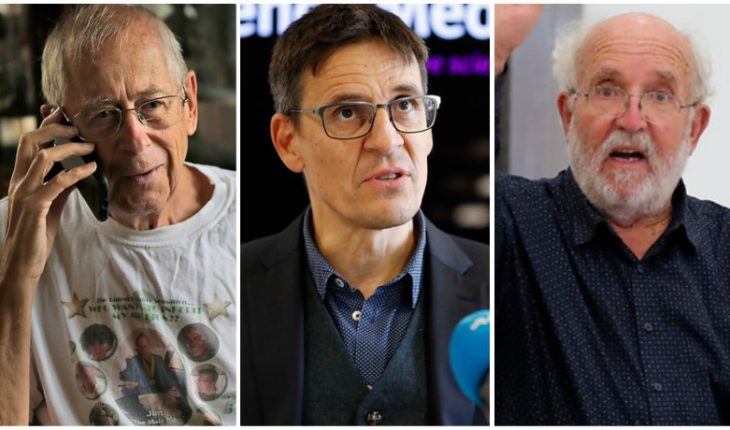James Peebles, Michel Mayor and Didier Queloz have received the 2019 Nobel Prize in Physics for their contributions to understanding the evolution of the Universe and the place of the Earth in the cosmos.
According to the jury’s ruling, Peebles, a Canadian physicist at Princeton, has been recognized for his “theoretical discoveries in physical cosmology”. He predicted some of the most important properties of microwave radiation background fluctuations as early as the 1970s. He later developed the basis for the statistical description of the structure of the universe.
Major – Swiss professor in the Department of Astronomy at the University of Geneva – and Queloz – an astronomer also based in Geneva – have been for the discovery of an “exoplanet orbiting a star like the sun”, specifically the 1995 finding of 51 Pegasi b.
The Nobel jury noted in a statement that James Peebles’ ideas on physical cosmology have enriched the entire field of research and laid the foundationfor the transformation of cosmology over the past fifty years, from speculation to Science. Its theoretical framework, developed since the mid-1960s, is the basis of our contemporary ideas about the universe.
The Big Bang model describes the universe from its earliest moments, almost 14 billion years ago, when it was extremely hot and dense. Since then, the universe has expanded, becoming bigger and colder. Just 400,000 years after the Big Bang, the universe became transparent and the rays of light were able to travel through space. Even today, this ancient radiation is all around us and, encoded in it, many of the secrets of the universe are hidden. Using his theoretical tools and calculations, James Peebles was able to interpret these traces from the childhood of the universe and discover new physical processes.
The results showed us a universe in which only five percent of its content is known, the matter that makes up the stars, the planets, the trees and us. The rest, 95 percent, is dark matter and dark energy unknown. This is a mystery and a challenge for modern physics, the jury stresses.
In October 1995, Michel Mayor and Didier Queloz announced the first discovery of a planet outside our solar system, an exoplanet, orbiting a solar-like star in our galaxy, the Milky Way. At the Haute-Provence Observatory in southern France, using custom-made instruments, they could see planet 51 Pegasi b, a gas ball comparable to the solar system’s largest gas giant, Jupiter.
For the Nobel jury, this discovery started a revolution in astronomy and since then more than 4,000 exoplanets have been found in the Milky Way. Strange new worlds are still being discovered, with an incredible wealth of sizes, shapes and orbits. They challenge our preconceived ideas about planetary systems and are forcing scientists to review their theories about the physical processes behind the origins of planets.
With numerous projects planned to start searching for exoplanets, we can eventually find an answer to the eternal question of whether there is another life out there, he adds.
translated from Spanish: Nobel Prize in Physics for a Cosmos theorist and two “world hunters”
October 8, 2019 |





